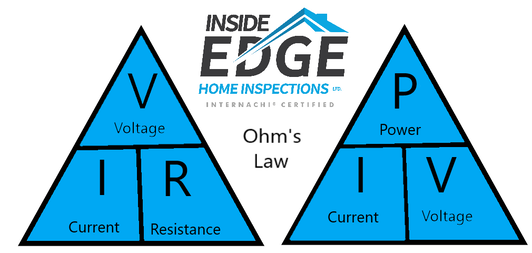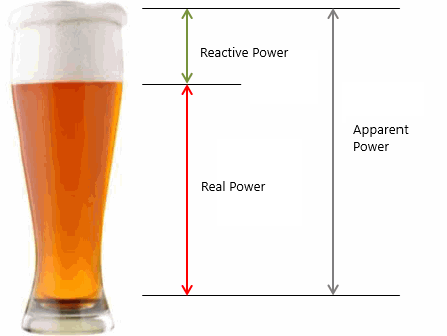Mike's Home Inspector BlogMichael Burfitt |
|
I am definitely not an electrician, nor do I play one on TV (at least not yet....) but if there is one area where I can confidently say I have a strong knowledge it is electrical systems. Electricity is a very complex subject, and while my knowledge is nowhere near that of an electrician or an electrical engineer, I certainly know enough to advise my clients whether or not they need the services of a professional. Today I thought I would share with you Ohm's Law, one of the backbones of electrical theory and the importance of understanding it as home inspectors. In its basic form, Ohm's law states that power (Watts), current (Amperes), resistance (Ohms) and voltage (Volts) are interrelated. If you treat the vertical lines as multiplication and the horizontal lines as division, you can solve for lots of variables just like in Junior High and/or Middle School! Here are some examples:
What's the Relevance to Homes? This likely seems like good information, but not information you will ever need. The truth is this is important information to note and to help you understand more about your home. The first thing we will look at is power, which is measured in Watts just like on lightbulb labels. Looking at the pyramid above you can see power is a measure of current multiplied by voltage. From a home inspector's point of view, a house with a higher amperage means more power is available. We can generally ignore voltage because as much as we complain about Nova Scotia Power, we have a very stable electrical system that is almost always around 120-125 volts, with 99.9% of homes having two of these feeds (120x2=240 volts). Three phase systems work a little differently, usually at 208 volts, but we'll focus on single phase residential homes for this blog post. Understanding Power Bills Simply put, the power bill is measured in Kilowatt hours used (kw/H). One kilowatt hour is equivalent to 1000 watts used over a one-hour period and while the rates fluctuate, it usually runs around 16 cents. Our home is pretty typical and usually consumes around 30,000 watts a day in summer and 70,000 watts in the coldest weeks of the year. Doing simple math, we spend roughly (30,000/1000) x 0.16= $4.80/day on electricity in the summer and (70,000/1000) x 0.16= $11.20/day in the coldest days of winter. Since we have a 125-amp system at home, looking at Ohm's law this means we have 125A x 240V = 30,000 watts available. With an upgrade to 200-amp service, we would have 200A x 240V = 48,000 watts. This means we don't have enough capacity, right? Of course not! The 70,000 watts we use in the winter for example is spread over an average of 24 hours while the 30,000 is our capacity at a specific point in time. In simple terms, unless we ran the dryer, oven, air conditioner and heaters all at once we should have more than enough capacity to handle the electrical load. Any electrician would point out I am ignoring the fact that electrical systems are designed to run at approximately 80% capacity, but this further proves my point: electrical systems are both very basic AND very complicated at the same time and should be left to the experts. Reality is a Wee Bit More Complicated My example above is only an approximation because real life power systems use Alternating Current (AC) rather than Direct Current (DC). Any electrical engineer could give us a long lecture about how the Power Factor (basically an efficiency rating from 0 to 1, ideally 0.95 or higher) needs to be accounted for. Although it is far more important in industrial settings it does mean that some of the Apparent Power received is known as Reactive Power (useless) rather than Real Power (useful). This is yet another reason why, although it seems very simple to just attach a few wires to a box, electricity is complicated, dangerous and needs to be left to the pros. |
Archives
July 2024
Categories
All
|
|
Inside Edge Home Inspections Ltd.
Halifax, NS 902-209-9921 [email protected] Proudly Serving the HRM & Central Nova Scotia |



 RSS Feed
RSS Feed

